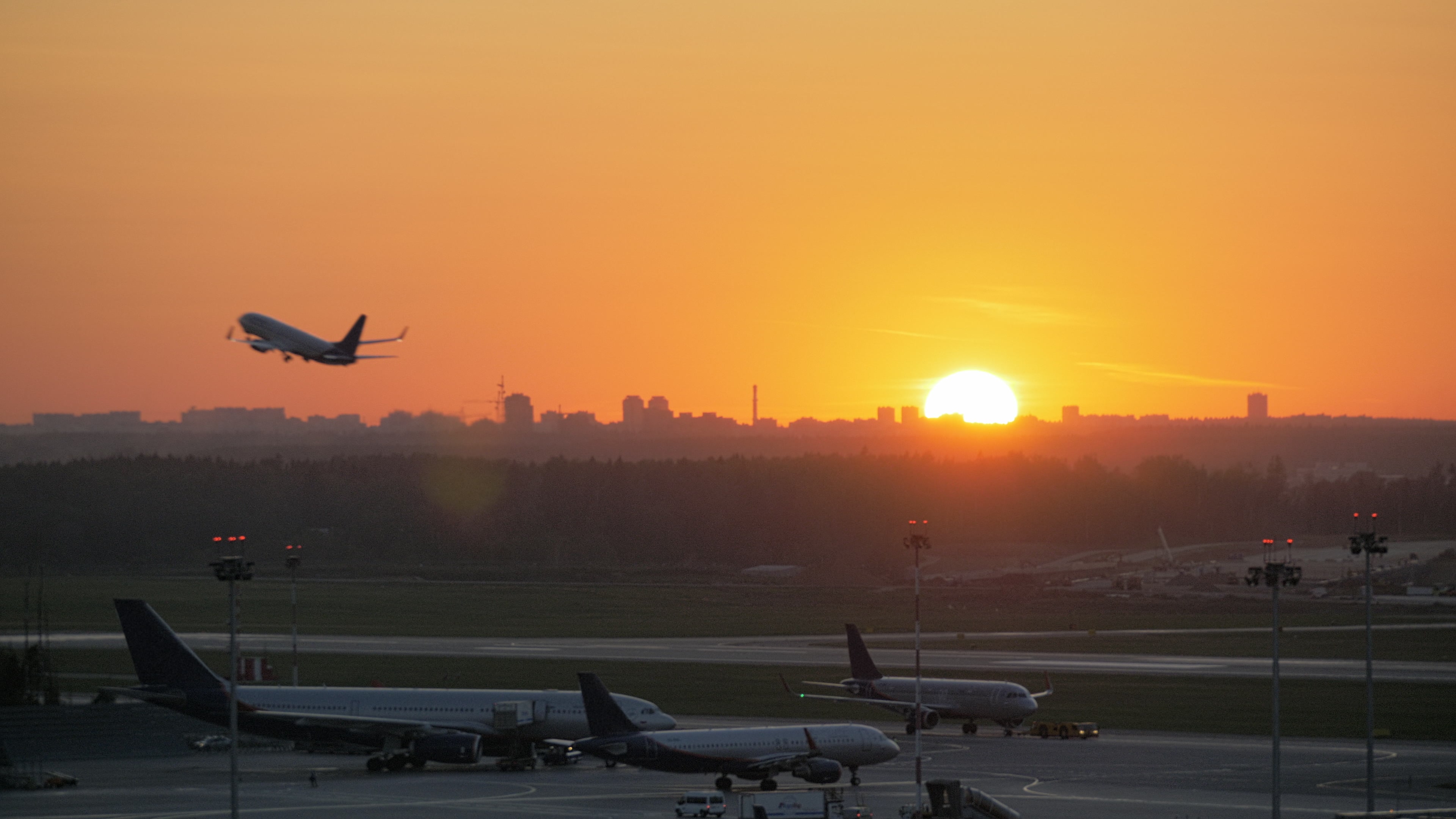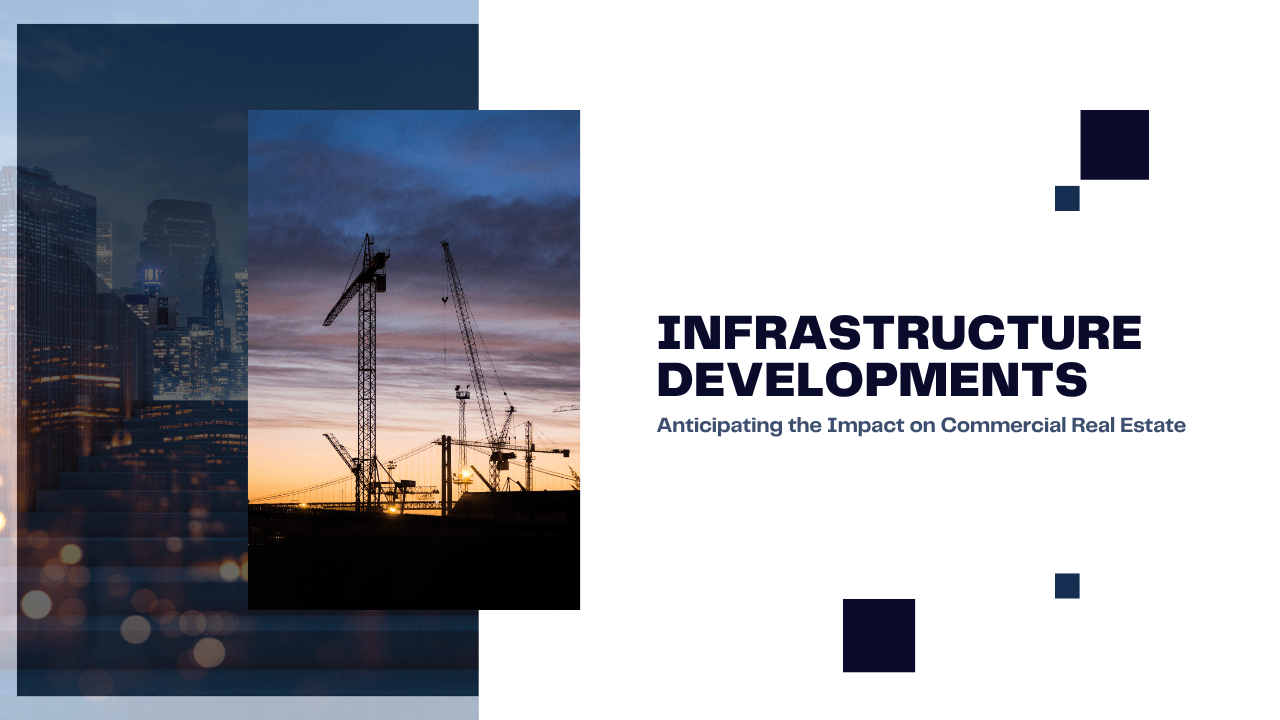Los Angeles is synonymous with growth and opportunity, and it has long been a leader in innovation and possibility. The latest wave of infrastructure developments is designed to reshape the city and drive some energy into the commercial real estate market.
For real estate investors, understanding how these advancements will influence property values, demand, and accessibility is key to staying ahead in this constantly shifting and competitive market.
LA’s infrastructure projects are designed to accommodate its population of visitors and residents, as well as its growing demand for modern urban spaces. From enhanced public transit systems to massive urban revitalization projects, these infrastructure advancements promise to improve connectivity, increase efficiency, and attract new businesses to the city.
Let’s take a look at some of the projects getting the most attention so investors can plan for how to best position their properties in the new LA landscape.
Los Angeles Metro Expansion
Los Angeles Metro has been expanding with the full support of local residents and businesses. The Measure M Expenditure Plan is supported by an increased sales tax, which more than 70 percent of local voters said yes to almost 10 years ago. It’s become a road map to guide the investments the city has been making in transit over the last several years.
The measure's original eight goals ranged from reducing traffic congestion to expanding regional transit and improving neighborhood streets, allowing Los Angeles residents to get around more safely and easily. These plans have also made commercial properties more accessible.
Recently, the LA Metro has been adding more lines, increasing accessibility between key areas like Downtown, Westside, and the San Fernando Valley. Projects like the Purple Line Extension are expected to significantly reduce commute times and make commercial districts more attractive to businesses and employees.
LAX is Modernizing and Expanding
 Los Angeles International Airport creates over $126.6 billion in economic output, supporting around 620,600 jobs in the region, and generating billions of dollars in local, state, and federal tax revenue. It’s a commercial powerhouse on its own. Over 75 million passengers transit through the airport annually, fueling the need for growth and expansion.
Los Angeles International Airport creates over $126.6 billion in economic output, supporting around 620,600 jobs in the region, and generating billions of dollars in local, state, and federal tax revenue. It’s a commercial powerhouse on its own. Over 75 million passengers transit through the airport annually, fueling the need for growth and expansion.
If it seems like the airport has been under construction forever, it’s because there’s been a consistent investment in its condition, opportunities, and ability to support the needs of business and leisure travelers.
One of the most ambitious airport renovation projects in the country, the $14 billion LAX modernization effort will further cement LA’s status as a global hub. The addition of the Automated People Mover (APM) and revamped terminals are anticipated to draw more international and domestic business travelers, boosting demand for commercial spaces near the airport.
Urban Revitalization in Downtown LA

With investments in parks, pedestrian-friendly spaces, and mixed-use developments, Downtown Los Angeles is experiencing a significant transformation. Areas like South Park and the Arts District are evolving into hotspots for innovation hubs and upscale retail, driving demand for commercial real estate.
The 2028 Olympics and the Need for Updated Infrastructure

Sports infrastructure will be important, but it’s so much more than that. Hotels, restaurants, and other commercial properties will all be putting their best business feet forward in order to do tremendous business and get their brands in front of the entire world.
Some of the things to look for:
Transportation Overhaul
One of the most significant areas of investment is transportation. LA already struggles with legendary traffic congestion, and with the world watching, the city is investing billions to expand and modernize its transit systems. Key projects include the Metro Expansion, which we’ve already discussed. There’s also the “28 by ’28” Plan, which is an ambitious initiative that aims to complete 28 major transportation projects before the Games, easing movement across the city during and after the event.
For real estate investors, improved public transit links mean increased demand for properties in transit-oriented neighborhoods. Areas such as Culver City and Crenshaw are worth watching as they become more connected and accessible.
Hosting Venues and Surrounding Neighborhoods
The Games will use a mix of iconic venues like the Los Angeles Memorial Coliseum and newly built spaces such as the state-of-the-art Sofi Stadium. Investments in surrounding neighborhoods are inevitable, as upgrades to infrastructure, hospitality, retail, and housing cater to both attendees and residents. This often triggers a wave of gentrification, enhancing property values for commercial spaces. It’s also important for investors to keep up with the community impacts, which can also be both positive and negative.
For smart commercial real estate investors, the 2028 Olympics present both opportunities and challenges in the commercial real estate market. Here’s what you can expect:
Spikes in Demand for Hospitality and Retail Spaces
With millions of visitors descending on Los Angeles, there will be a surge in demand for hotels, short-term rentals, restaurants, and retail outlets. Key locations around primary venues—such as Downtown LA, Hollywood, and the Westside—are prime spots for investment. Commercial properties that cater to tourism, such as boutique hotels, luxury shopping centers, and experiential retail spaces, are likely to see attractive returns.
Growth in Mixed-Use Developments
The Olympics traditionally push for urban renewal, and LA is no exception. Mixed-use developments, which combine residential, retail, and office spaces, are expected to thrive in areas targeted for infrastructure upgrades. Properties that allow for live-work-play environments will attract tenants looking for convenience and a vibrant community atmosphere.
Long-Term Value in Office and Industrial Spaces
Post-Olympics, LA is likely to see sustained demand for office and industrial spaces, especially as transportation infrastructure makes more areas accessible. Warehouses, logistics hubs, and co-working spaces in developing neighborhoods will remain attractive even after the Games conclude.
While the opportunities are undeniable, real estate tied to mega-events can come with risks. Speculative prices, delays in infrastructure projects, or a sudden market correction could impact returns. Diversifying investments and partnering with local experts can help mitigate these risks.
High-Speed Rail and Regional Connectivity
As infrastructure in Los Angeles continues to focus on transportation, there have also been meaningful movements in high-speed rail.
Projects like the California High-Speed Rail aim to link LA with major cities such as San Francisco and San Diego, drastically reducing travel times and increasing accessibility. This enhanced connectivity is expected to stimulate economic growth, support tourism, and attract businesses looking to capitalize on a more integrated regional market. Additionally, improved rail access may drive demand for commercial real estate near transit hubs, reshaping how industries and communities approach location strategy in the region.
Infrastructure and Environmentalism

A number of infrastructure projects are focused on sustainability and making the city a bit more “green.” Metro stations are equipped with solar panels, for example. There are also plans such as the LA River Revitalization Project. It’s an ambitious initiative aimed at restoring the 51-mile river corridor to enhance environmental sustainability, recreation, and urban development. Through efforts like habitat restoration, the creation of green spaces, and improved flood management, this project seeks to reconnect communities to natural resources while promoting economic growth.
For commercial real estate, the revitalization is expected to trigger new opportunities, particularly in areas adjacent to the river, by increasing property values and fostering the development of mixed-use spaces, cultural hubs, and business districts.
How Infrastructure Developments Impact Commercial Real Estate
The relationship between infrastructure and commercial real estate is undeniable. Better infrastructure leads to improved access and higher foot traffic—two critical elements for businesses.
Here’s how L.A.’s new projects are likely to impact the commercial real estate market:
1. Increase in Property Values
Improved transportation and accessibility will likely boost the desirability of commercial properties close to these newly developed hubs. Properties near metro lines or major infrastructure projects often see an appreciation in value due to increased ease of access.
2. Stronger Demand for Office and Retail Spaces
Infrastructure developments can attract businesses, startups, and retailers looking to capitalize on areas with improved connectivity and higher pedestrian activity. Especially in sectors like hospitality, retail, and co-working spaces, businesses will flock to areas that promise increased customer engagement.
3. Neighborhood Redevelopment and Gentrification
L.A.’s urban revitalization efforts are transforming underdeveloped neighborhoods into prime locations for commercial ventures. This redevelopment often leads to increased interest from high-end retailers, luxury hospitality brands, and tech companies, further boosting demand for nearby commercial spaces.
4. Opportunities in Emerging Markets
Areas previously overlooked by investors may become the next hotspots, thanks to transit expansions and infrastructure upgrades. Units located in neighborhoods that are part of metro extensions, for example, could present new investment opportunities at lower entry points.
5. Tenant Diversification

Improved accessibility makes it easier for diverse industries to access and utilize commercial spaces. Companies looking for modern, efficient office space in accessible regions are likely to diversify tenant profiles in areas enhanced by L.A.’s infrastructure upgrades.
At Bell Properties Commercial Real Estate, we specialize in helping investors identify high-potential commercial real estate opportunities in Los Angeles and beyond. Our team has the expertise to assess how infrastructure developments impact the market, offering you insights and actionable strategies to maximize your investment returns. Contact us.



